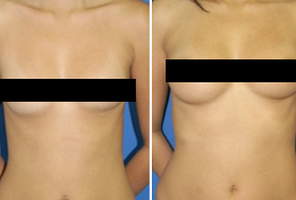The duodenal switch (DS) is a modification of the BPD designed to prevent ulcers, increase the amount of gastric restriction, minimize the incidence of dumping syndrome, and reduce the severity of protein-calorie malnutrition. The DS was first reported by Dr. Doug Hess in 1986.
The DS works through an element of gastric restriction as well as malabsorption. Anatomically, the main difference between the DS and the BPD is the shape of the stomach - the malabsorptive component is essentially identical to that of the BPD. Compared to the BPD, the DS leaves a much smaller stomach that creates a feeling of restriction much like that of a RYGBP. Instead of cutting the stomach horizontally and removing the lower half (such as with the BPD), the DS cuts the stomach vertically and leaves a tube of stomach that empties into a very short (2-4 cm) segment of duodenum.
The duodenum is tolerant of stomach acid and therefore is much more resistant to ulceration compared to the small intestine. Removing part of the stomach also decreases the amount of acid present. Whereas the BPD involves an anastomosis (connection) between the stomach and the intestine, the DS involves an anastomosis between the duodenum and the intestine.
A theoretical (but clinically unproven) benefit of the DS is an improvement in absorption of iron and calcium in comparison to the BPD. The disadvantage of transecting the duodenum is the large number of vital structures immediately adjacent to the duodenum. Several large blood vessels and the major bile duct are located here. Injury to these structures can be life-threatening.
These procedures have some of the highest reported weight loss in long-term studies, but also have the highest rate of nutritional complications compared to the RYGBP and the purely restrictive procedures. These operations are some of the most complex in bariatric surgery. However, as with most studies of weight loss surgery, there is wide variability in long-term results between different centers. Some patients and surgeons believe that the DS is a superior operation to the RYGBP and BPD because of the lack of a "dumping syndrome", described above. The DS and BPD have their own particular side effects. After a meal that is high in fat, people can experience foul smelling gas and diarrhea.

